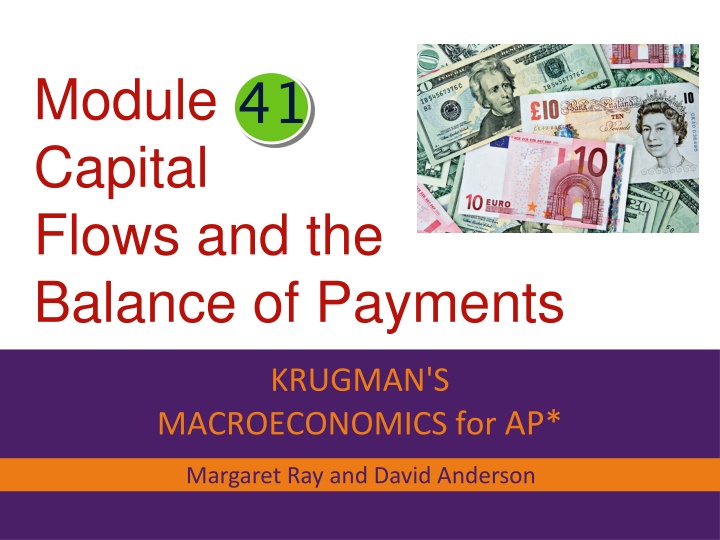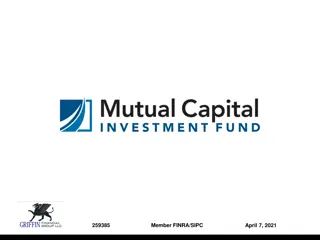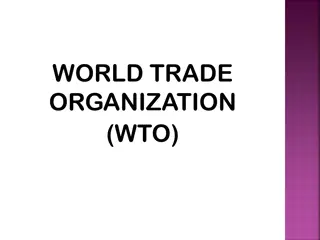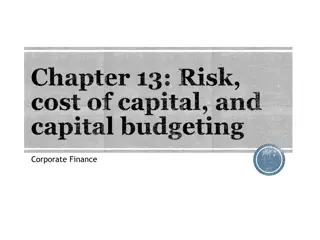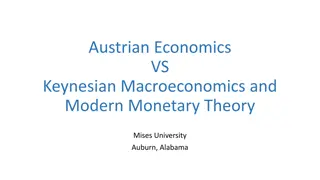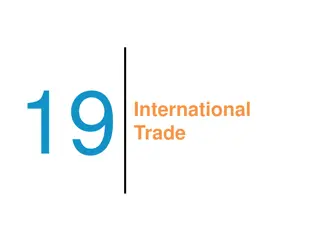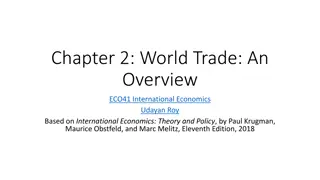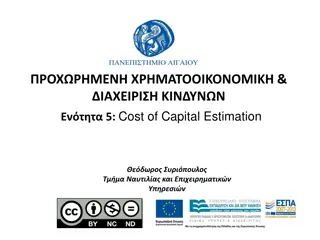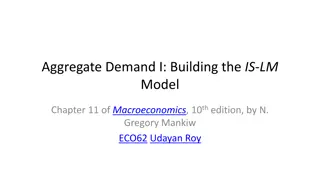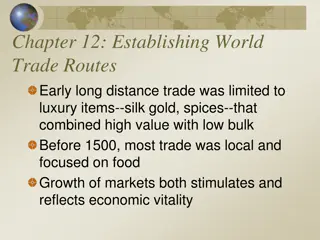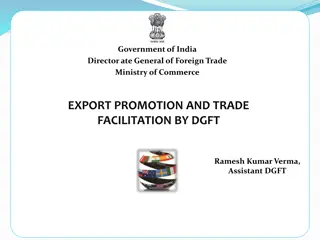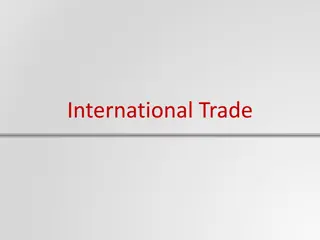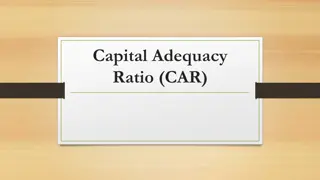International Macroeconomics: Trade Balance and Capital Flows
This unit delves into the basics of international macroeconomics, focusing on the trade balance, capital flows, and exchange rates. Explore concepts like exports, imports, net exports, and factors influencing a country's trade position through interactive learning and real-world examples.
Download Presentation

Please find below an Image/Link to download the presentation.
The content on the website is provided AS IS for your information and personal use only. It may not be sold, licensed, or shared on other websites without obtaining consent from the author.If you encounter any issues during the download, it is possible that the publisher has removed the file from their server.
You are allowed to download the files provided on this website for personal or commercial use, subject to the condition that they are used lawfully. All files are the property of their respective owners.
The content on the website is provided AS IS for your information and personal use only. It may not be sold, licensed, or shared on other websites without obtaining consent from the author.
E N D
Presentation Transcript
Module Capital Flows and the Balance of Payments 41 KRUGMAN'S MACROECONOMICS for AP* Margaret Ray and David Anderson
What you will learn in thisUnit: One of the Ten Principles of Economics from Chapter 1: Trade can make everyone better off. This unit introduces basic concepts of international macroeconomics: the trade balance (trade deficits, surpluses) international flows of assets exchange rates
The International Flows of Goods and Capital The Flow of Goods: Exports, Imports, and Net Exports Exports goods and services that are produced domestically and sold abroad. Imports goods and services that are produced abroad and sold domestically. Net exports the value of a nation s exports minus the value of its imports, also called the trade balance
ACTIVE LEARNING 1: Variables that affect NX What do you think would happen to U.S. net exports if: A. Canada experiences a recession (falling incomes, rising unemployment) B. U.S. consumers decide to be patriotic and buy more products Made in the U.S.A. C. Prices of goods produced in Mexico rise faster than prices of goods produced in the U.S.
ACTIVE LEARNING 1: Answers A. Canada experiences a recession (falling incomes, rising unemployment) U.S. net exports would fall due to a fall in Canadian consumers purchases of U.S. exports B. U.S. consumers decide to be patriotic and buy more products Made in the U.S.A.
C. Prices of Mexican goods rise faster than prices of U.S. goods This makes U.S. goods more attractive relative to Mexico s goods. Exports to Mexico increase, imports from Mexico decrease, so U.S. net exports increase.
The Flow of Goods: Exports, Imports, and Net Exports Trade surplus- an excess of exports over imports Trade deficit an excess of imports over exports Balanced trade a situation in which exports equal imports
Factors that influence a Country s Exports, Imports, and Net Exports The tastes of consumers for domestic and foreign goods. The prices of goods at home and abroad The exchange rates at which people can use domestic currency to buy foreign currencies. The incomes of consumers at home and abroad The policies of the government toward international trade (existence of trade barriers).
The U.S. Economys Increasing Openness Percent of GDP 15% 10% Exports 5% Trade deficit = 6% of GDP in 7/2005 Import s 0% 1950 1955 1960 1965 1970 1975 1980 1985 1990 1995 2000 2005
The Flow of Financial Resources: Net Capital Inflow Net capital inflow the purchase of foreign domestic assets by foreign residents minus the purchase of foreign assets by US citizens Net capital inflow is also called net foreign investment. NCI = purchases of domestic assets by foreign residents purchases of foreign assets by US citizens The flow of capital abroad takes two forms. Foreign direct investment occurs when a capital investment is owned and operated by a foreign entity. Example:McDonalds opens a fast-food outlet in Moscow. Foreign portfolio investment involves an investment that is financed with foreign money but operated by domestic
Factors that Influence a Countrys Net Capital Inflow The real interest rates being paid on foreign assets The real interest rates being paid on domestic assets. The perceived economic and political risks of holding assets abroad. The government policies that affect foreign ownership of domestic assets In the News: How the Chinese Help American Home Buyers China is using funds from its large trade surpluses to purchase U.S. securities.
The Flow of Capital Net Capital Inflow measures the imbalance in a country s trade in assets: When NCI< 0, capital outflow Domestic purchases of foreign assets exceed foreign purchases of domestic assets. When NCI> 0, capital inflow Foreign purchases of domestic assets exceed domestic purchases of foreign assets.
ACTIVE LEARNING : Variables that affect Net Capital Inflow What do you think would happen to U.S. net capital inflows if: A. Honda builds a factory in Tennessee. B. The interest rate in England rises compared to interest rates in the US. C. Apple stock price skyrockets, drawing the attention of foreign buyers.
ACTIVE LEARNING 2: Answers A. Honda builds a factory in Tennessee U.S. net capital inflows would increase (purchase of real assets) B. Interest rates rise in England U.S. net capital inflows would decrease (US citizens would want to buy English financial assets) C. Apple Stock price skyrockets U.S. net capital inflows would increase (Foreign citizens would want to buy US financial assets)
Modeling the Financial Account Savings will flow toward higher returns SLF 1 USA SLF Japan r% r% 7% SLF USA SLF 1 Japan 5% 5% 3% DLF Japan DLF China QLF USA QLF Japan Debit to the US Financial Account or Capital Outflow Credit to the Japanese Financial Account or Capital Inflow
The Equality of Net Exports and Net Capital Outflow Net exports and net capital inflow each measure a type of imbalance in a world market. Net exports measures the imbalance between a country s exports and imports in world markets for goods and services Net capital inflow measures the imbalance between the amount of foreign assets bought by domestic residents and the amount of domestic assets by foreigners in world financial markets.
Balance of Payments Accounts Current Account Net Exports Trade Balance Factor Income Transfers Financial Account Private and Official Purchases of real or financial assets Current/Financial Relationship If the current account is in deficit the financial account must be in surplus and vice versa
